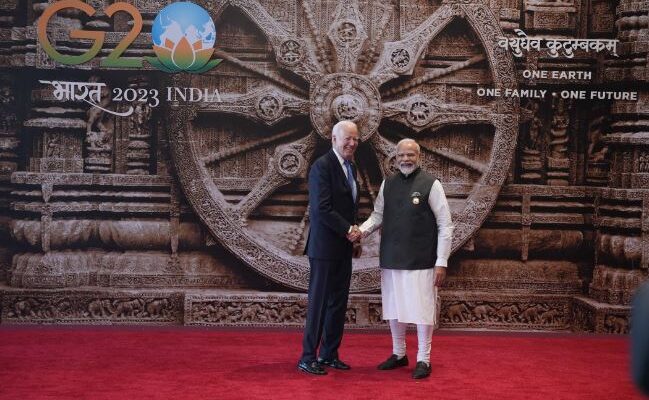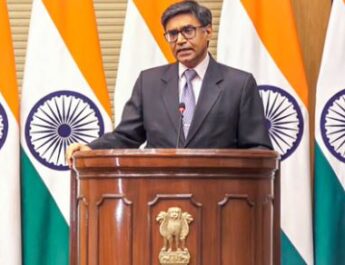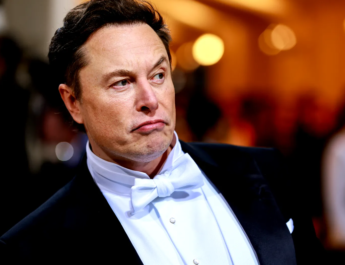The G-20 conference held in the Indian capital Delhi on 9 and 10 September was historic in many ways. At the beginning of the conference, Prime Minister Narendra Modi informed that the African Union has also joined the G20 family. Apart from this, another historic announcement was also made on the first day of the conference.
In fact, India, along with the United Arab Emirates, Saudi Arabia, the European Union, France, Italy, Germany, and the United States, announced the launch of the India-West Asia-Europe Economic Corridor to promote economic integration and sustainable development across continents.
Now let us know what is India-Middle East Europe Economic Corridor.
India-Middle East Europe Economic Corridor The objective of the India-Middle East-Europe Economic Corridor is to connect the countries of the Middle East through railways and connect them to India through ports. After the construction of this corridor, shipping time, cost, and fuel use will be reduced and will help in trade flow from the Gulf to Europe.
Apart from this, rail and shipping corridors will enable countries to trade more including energy products. Before its announcement, American official Finer had said that from America’s point of view, this agreement will reduce tension in the entire region and we feel that it will help in dealing with the conflict.
India and America will lead together
India will lead this corridor along with America. Under this agreement, work will be done on connectivity and infrastructure on a large scale. This trade route will pass through West Asia connecting India with Europe.
Apart from India and America, the United Arab Emirates and Saudi Arabia from West Asia and the European Union, France, Italy, and Germany from Europe will also be part of it.
What will happen under this project?
This project involves the construction of two separate corridors. The first is the Eastern Corridor which will help in connecting India with the Gulf region and the second is the Northern Corridor which will connect the Gulf region with Europe. Apart from this, shipping networks, railways, and road transport routes will be included in this corridor. Officially it has been named India Middle East Economic Corridor. Along with this, it is being projected as a modern spike route.
This corridor is so important because with its construction the ‘geography of trade’ of the world will change. Let us know in this story how India will destroy China’s dreams and Pakistan’s plans by building an economic corridor to Europe.
How will this project destroy China’s dreams?
The India-Middle East Europe Economic Corridor is a project worth hundreds of billions of dollars. On one hand, this project is being considered as a competition to China’s BRI initiative. On the other hand, this project is also being said to be a measure to stop China’s expansionist attitude.
It is believed that the India-Middle East Europe Economic Corridor can challenge China’s Belt and Road. In fact, connecting continents through transportation networks has become a geo-strategic feature of the 21st century.
China had announced the BRI project in Kazakhstan in 2013, the aim of which was to connect East Asia and Europe. We used to use this route to go to Europe for the spice trade in India.
Now because China and Pakistan are also on this route, then somewhere this route would become an obstacle for India. India has also refused to join BRI. They argue that this route passes through Indian areas occupied by Pakistan.
Apart from this, despite the involvement of many countries, BRI works like a unilateral project, in which China is the main investor while other countries are the recipients. Experts say that BRI is a project to fulfill China’s geopolitical ambitions.
Apart from this, through this project, China has laid a ‘debt trap’ for poor countries like Pakistan, Sri Lanka, Kenya, Zambia, and Laos, which take loans but are unable to repay them.
In such a situation, due to China’s increasing commercial and geopolitical influence, other countries see China as a rival or competitor. This is the reason why apart from Italy, no G-7 country has joined BRI.
Other G-7 countries have been planning for a long time to develop such projects in which they do not have to depend on China.
Pakistan’s plan will be ruined again
If Pakistan does business through BRI then this country can benefit more. Apart from this, if the India-West Asia-Europe Economic Corridor had not launched, India would have been forced to trade through China and Pakistan, due to which Pakistan could affect India’s trade.
Projects already started
In the year 2021, US President Joe Biden, with the cooperation of G-7, launched the Build Back Better World Initiative (B3W) to counter BRI. However, due to a lack of budget, there was a lot of delay in taking this project forward.
Europe is divided over BRI
Europe is divided over BRI. A total of 18 countries of the 27-member European Union are included in BRI. Therefore, the European Union is not in a position to take any tough stance against China’s BRI.
This is why the India-Middle East-Europe Corridor is a very important project from India’s point of view. India was not able to develop an economic corridor with West Asia and Europe due to the obstacles created by Pakistan.
A major advantage of this corridor is that it includes Saudi Arabia, the United Arab Emirates, and the European Union. These countries have a lot of money to invest.
How will America benefit from this project?
America can use this project to control Saudi Arabia’s growing relations with China and Russia and also to bring Israel and Saudi Arabia closer.
From India’s point of view, India will get strategic benefits from this corridor. In fact, China has tried to strategically surround India through CPEC and BRI. Now after the construction of this corridor, India will be able to get itself out of that circle of China.
After the construction of India’s Middle East Economic Corridor, India will be able to move freely on the Hormuz Strait, Suez Canal, and Bab Al Mandhab Strait. Let us tell you that one-third of the world’s oil and gas is exported through the Strait of Hormuz and it is a decisive route for India’s fuel security.
Apart from this, about 12 percent of the world’s global trade is also done through the Suez Canal.




